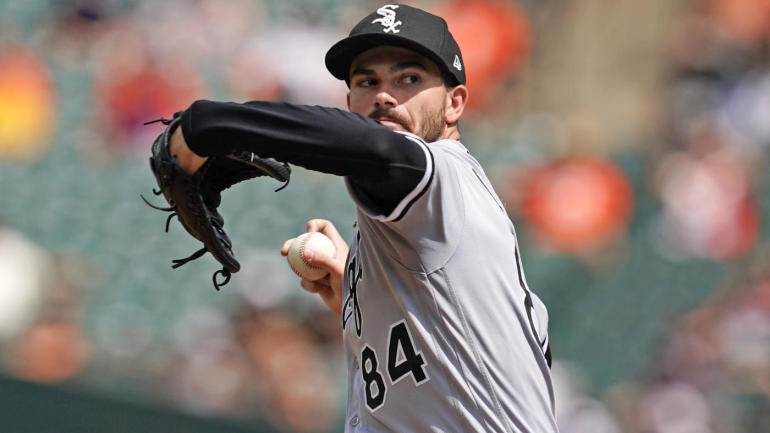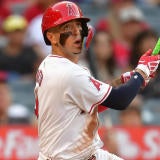
So Dylan Cease is a Padre now.
Awesome. Wow.
As exciting as it may be for Padres fans and the baseball world in general, it doesn't change much for the Fantasy game (unless you're one of the diminishing few who still plays in AL- or NL-only -- and if you've already drafted in such a format, hoo boy).
My concern for Cease never had anything to do with the uniform he wears. Sure, you could say he's going to a better park now, and on the subject of wins and losses, you'd be right to point out that the Padres at least have a smidgen of hope while the White Sox have none at all. But home runs were never Cease's issue, and he could do so much harm or good on his own that supporting cast is merely a peripheral matter.
What do I mean by that? This graphic sums it up nicely:
|
One year, he's runner-up for AL Cy Young. The next year, he's wrecking your ERA and WHIP. And then there's the strikeouts -- my God, the strikeouts. They're why hope springs eternal, why Cease was one of the most discussed trade chips this offseason, and why the Padres, a team that already dealt away Juan Soto this offseason, decided to push their chips back in for 2024 (including one that they actually acquired in the Soto deal).
But can he throw strikes?
That's the eternal question for Cease, a pitcher whose ability to sling a baseball is nothing short of awe-inspiring otherwise. I mean, just look at some of the footage from spring training:
Dealin' 😮💨 pic.twitter.com/Hxnc9Qut6q
— Chicago White Sox (@whitesox) March 8, 2024
And for what it's worth, he has thrown 83.1 percent of his pitches for strikes this spring, striking out 14 in 8 1/3 innings. It's not worth much, given the small sample of it all -- and in fact, a small sample is the only way a pitcher could have a strike percentage that high given that 70 percent would normally lead the league. But seeing as Cease has always been on the other end of the spectrum, throwing just 61.8 percent of his pitches for strikes last year, it at least bears mentioning.
I also couldn't help but notice that the rumor mill heated up for him again once he began making headlines with his performance, and in a way, that's unfortunate. So much of the focus this spring has been on his trade prospects that I haven't read much about any changes he might have made to his approach following a disappointing season.
But we all know the way this could go, the way it's more likely to go. Even in his near-Cy Young season, Cease led all the majors in walks, throwing just 62.2 percent of his pitches for strikes. His .260 BABIP that year kept his WHIP down and likely wasn't sustainable. Then again, his .330 BABIP last year might not be sustainable on the other end. The middle ground was his .309 BABIP in 2021, when he put together a 13-7 record, 3.91 ERA, 1.25 WHIP and 226 strikeouts, and that's sort of what I'm expecting from Cease in 2024. Weighing risk vs. reward, he comes out to being a top-25 starting pitcher for me, just as he did before the trade.
Is he someone I'm eager to draft at that point? I've been coming around to it, sure. His downside (presuming good health, of course) still puts him among the league leaders in strikeouts, and unlike last year, he's going late enough to build in contingencies for ERA and WHIP. But if this renewed attention casts him in such a favorable light that he begins to climb the starting pitcher rankings, past Justin Steele and Zach Eflin, I'm probably out. I need more assurances at that stage of the draft.
So that's where things stand with Cease, but what about the ripple effects of this deal?
- Among the prospects going back to the White Sox, the most interesting for our purposes is Drew Thorpe, who, as I mentioned, the Padres acquired from the Yankees in the Soto deal. The 23-year-old led the minors with 182 strikeouts last year and showed surprising durability for a minor-leaguer, consistently working into the seventh inning. His fastball is only as good as his changeup (which is a true standout), and that profile makes some talent evaluators squeamish. Still, the White Sox are likely to need him sooner than later, just as the Padres would have.
- Jairo Iriarte is also a pitching prospect of note, offering a more conventional power profile with the usual control hurdles. He's a little behind Thorpe for Dynasty purposes and a little behind on the minor-league ladder as well.
- Cease's removal from the rotation opens a spot in the White Sox rotation for left-hander Garrett Crochet, a former prospect who has been lighting up radar guns this spring. He has worked exclusively in relief since the White Sox drafted him 11th overall in 2020 (and struggled to stay healthy in that role, let's be honest), but the upside is compelling enough to put him in the late-round discussion on Draft Day, particularly in formats where you can take advantage of his relief pitcher eligibility.



















